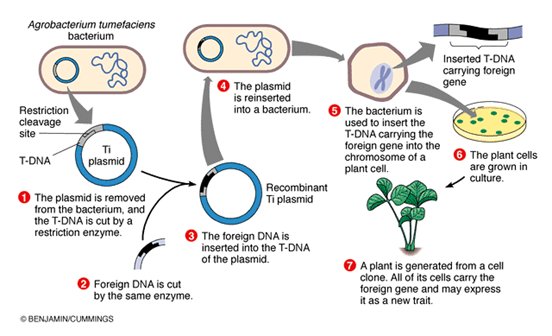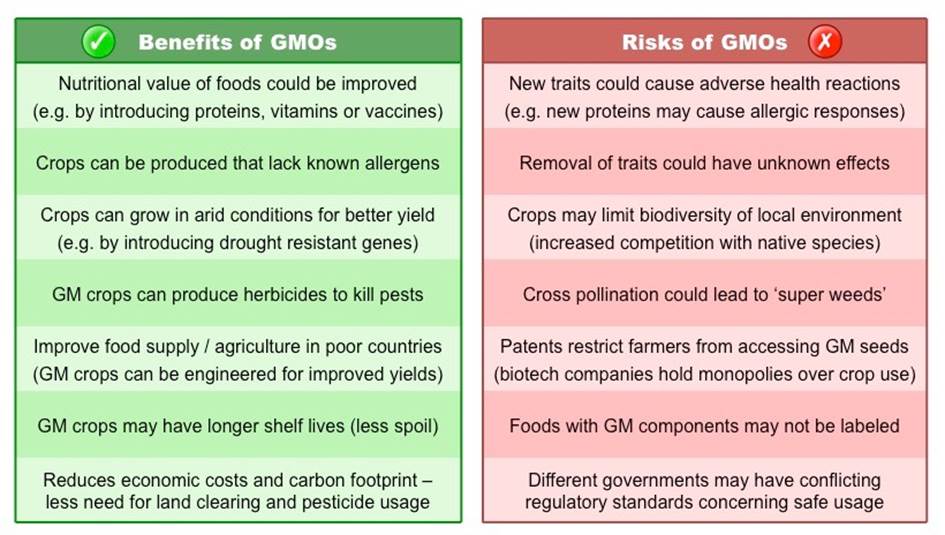Description

Disclaimer: Copyright infringement not intended.
Context
- The Supreme Court expressed concern about the plight of thousands of women agricultural labourers in rural areas, traditionally engaged in de-weeding.
Details
- In rural areas, women are experts in removing weeds. They are a part of the labour force in agriculture in India. It brings them employment.
- If the government permits the commercial cultivation of herbicide-tolerant crops such as GM mustard in India there will be a loss of employment.
What are GM crops?
- GM food involves the editing of genes of a crop in such a way that it incorporates beneficial traits from another crop or organism.
- This could mean changing the way the plant grows, or making it resistant to a particular disease.
- Food produced using the edited crop is called GM food. This is done using the tools of genetic engineering.

The debate around GM Crops
Merits
Reduced input burden
- Since genetically modified crops require minimal pesticides, fertilizers or insecticides the cost of input is greatly reduced.
.jpg)
Disease resistant and Sustainability
- Through genetic modifications the genetically modified crops are made resistant to diseases. This enhances their sustainability and yield.
Environmental Protection
- According to an Oklahoma State University report, the increase of GM animals and crops often requires less time, tools and chemicals, and may help with reducing greenhouse gas emissions, soil erosion and environmental pollution.
Longer Shelf life
- Genetically modified foods have a longer shelf life. This enhances the ease of transportation and storage.
Affordability
- Due to reduced burden of inputs and longer shelf life hence reduced wastages, the prices of the output will be low.
- This increases the affordability.
Fortification
- According to the Food and Agricultural Organization of the United Nations, some GM foods have been engineered to become more nutritious in terms of vitamin or mineral content.
- This not only helps people get the nutrients they need, but also plays a significant role in fighting against malnutrition in third-world countries.
.jpg)
Decreased Use of Pesticides
- It has been proven that genetically modified crops do not need pesticides to become stronger against various types of insects or pests that may destroy them.
Demerits
Gene Transfer
- A constant risk of genetically modified foods is that an organism’s modified genes may escape into the wild.
- Experts warn that genes from commercial crops that are resistant to herbicides may cross into the wild weed population, thus creating super-weeds that have become impossible to kill.
Antibiotic resistance
- Genetically modified crops have inbuilt antibiotic properties due to their inbuilt mechanisms for disease control.
- This can result in superbugs which can disrupt the health care sector.
Carcinogen exposure risk
- There are researches which show that crops tolerant to commercial pesticides greatly increase the risk of cancer development in rats.
- Genetically modified crops can also pose serious threats to human health.
Lower Level of Biodiversity
- When we remove a certain pest that is harmful to crops, we could also be removing a food source for a certain species.
- In addition, genetically modified crops could prove toxic to some organisms, which can lead to their reduced numbers or even extinction.
Gene Spilling
- It is unclear what effects, if there are any, the genetic pollution resulting from inadequate sequestering of genetically modified crop populations would have on the wild varieties surrounding them.
Exploitation
- Some countries may use genetic engineering of foods as a very powerful weapon against their enemies.
Widening Gap of Corporate Sizes
- This disadvantage can possibly happen between food-producing giants and their smaller counterparts.
- Larger companies might have more political power and might be able to influence safety and health standards.
New Diseases
- As previously mentioned, genetically modified foods can create new diseases.
Economic Concerns
- Consumer advocates are worried that this will raise seed prices to very high levels that third-world countries and small farmers cannot afford them, thus widening the gap between the rich and the poor.
|
Case Studies
Monsanto's INGARD cotton
Monsanto sold its INGARD cotton (also known as Bt cotton) to Australian growers with estimates that there would be a 90% drop in sprays. In fact, for the 1996-97 crops there was a 52% decrease.
However, Australian farmers generally found themselves worse off financially than they thought they would. Some had to spray just as much as usual, yields were variable and costs higher. More insects survived than had been intended by the developer.
Mannion and Morse report
On a global level, from 1996 to 2006, GM crops increased farm income by $40.7 billion, occurring in both developed (47%) and developing agricultures (53%). There has been a global yield increase of 377 million tons from 1996 to 2012.
|
In a nutshell,

The Case of India
- India allows the import of GM soybean and canola oil.
- The only crops approved for cultivation are (bt) cotton.
- India had an effective ban on other GM seeds for a considerable time. The Genetic Engineering Appraisal Committee (GEAC) earlier this year cleared a proposal for commercial cultivation of GM mustard, and it was also approved by the Ministry of Environment, Forest and Climate Change.
Note: In India, the Genetic Engineering Appraisal Committee (GEAC) under of Ministry of Environment, Forest and Climate Change is the apex body that allows for commercial release of GM crops
Conclusion
- Genetically modified foods can potentially solve many hunger and malnutrition problems in the world, as well as help protect and preserve the environment by increasing yields and reducing reliance upon chemical pesticides and herbicides.
- However, it is important to proceed with caution to avoid unfavorable consequences for the surroundings and our health, considering that genetic engineering technology is very powerful.
https://www.business-standard.com/article/current-affairs/gm-mustard-unsustainable-in-indian-context-supreme-court-told-122113001156_1.html#:~:text=The%20Genetic%20Engineering%20Appraisal%20Committee%20(GEAC)%20earlier%20this%20year%20cleared,Environment%2C%20Forest%20and%20Climate%20Change.














